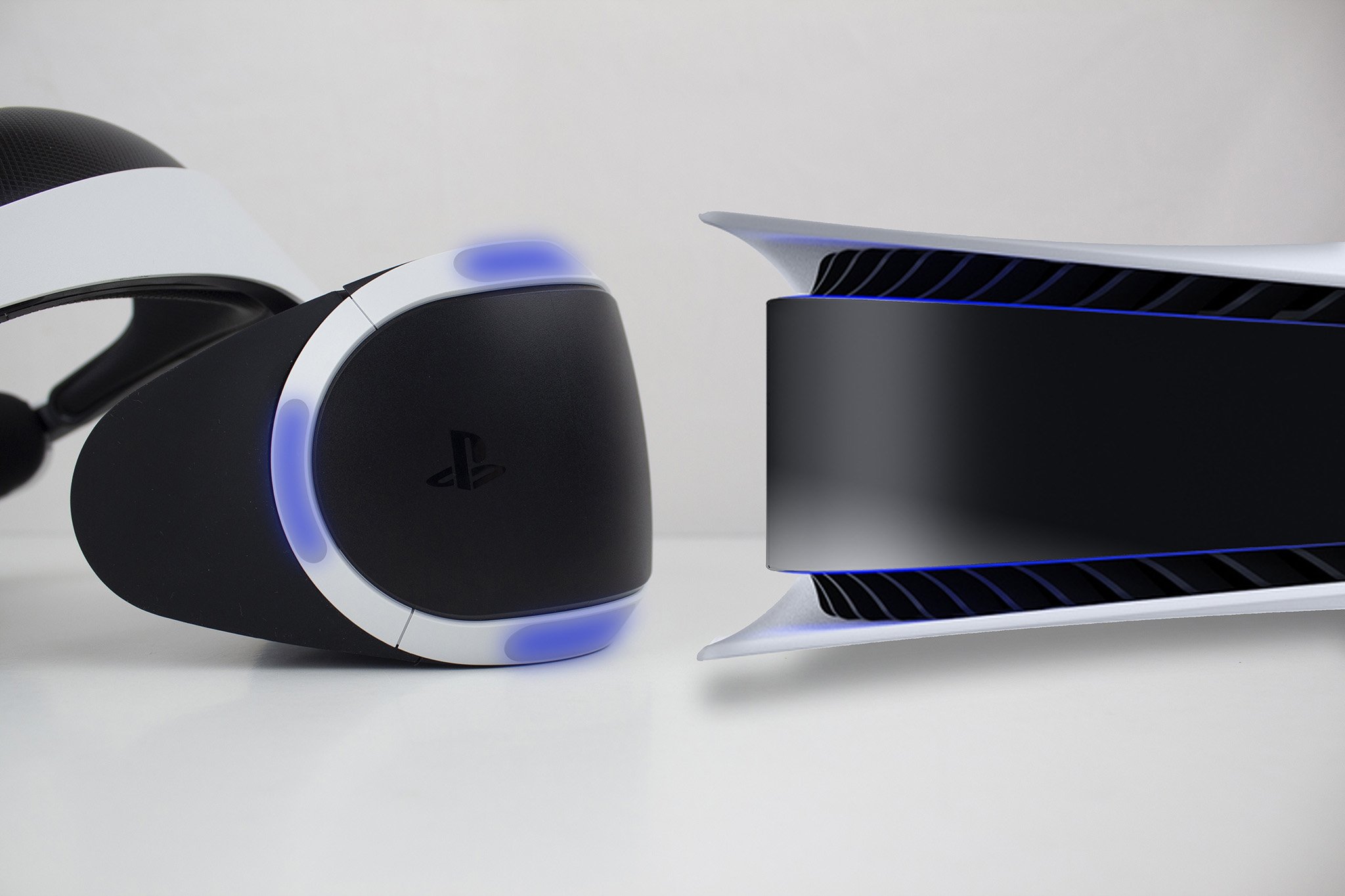Pixels will finally be a thing of the past.

what you need to know
- Display Supply Chain Consultants said in its weekly report that PS VR2’s displays will have a density of more than 800 pixels per inch per eye.
- This is a huge improvement over the original, which was under 200 PPI per eye.
- Sony will continue to use RGB striped OLED panels, which are also important for display density and quality.
- PS VR2 is expected to launch later in 2022, but no release date has been set.
PlayStation VR2 will reportedly have the highest pixel density display of any modern VR headset a report Show Supply Chain Consultants (DSCC).In its weekly industry supply chain report, DSCC’s CEO Ross Young said it would not reveal a display supplier for Sony’s upcoming next-generation PS VR2, but the display itself has more than 800 PPI (pixels per inch) Display density each eye.
The last part is especially important because it means that Sony will be able to offer the absolute highest graphics fidelity of any VR headset on the market.
To be fair, the original PSVR offered a PPI density of 386. entire display panel. Actually, if we’re doing basic math, that means 193 PPI per eye.
Young said Sony will likely achieve this by using a combination of thinner fine metal masks and direct-view OLED displays using RGB stripes. As a basic explanation, a fine metal mask is used to apply red, green and blue sub-pixels to the display.
The original PSVR also used an RGB striped OLED panel, which ensured the display looked much better than most OLED panels found in other VR headsets when it launched in 2016. Other headsets — the original Oculus Rift and HTC Vive — use PenTile OLED panels, which are made up of subpixels that form a diamond shape.

Oculus Quest 2’s RGB stripe panel versus original Oculus Quest’s PenTile OLED
RGB striped displays use a column of red. Green and blue pixels can be more easily aligned side-by-side on a display for dense displays. In contrast, PenTile diamonds leave voids in the pixel structure when placed side-by-side.
Sony previously showed off a new micro OLED display panel in December 2021, built for VR and offering an astonishing 4k/inch resolution. These panels are different from those used in PS VR2, but could represent the next big leap in VR resolution.
While pixel density is a hot topic for smartphone displays, the average smartphone appears to be around 500 pixels per inch. In VR, having more pixels per physical inch is more important because your eyes are physically closer to the display, which means you can actually see the pixels themselves at close range.
This is especially true because VR headsets use a set of lenses to magnify the display. Having a display with 800 PPI per eye should mean pixels are virtually non-existent, giving Sony a means to market the PS VR2’s display as retina-ready.
The PS VR2 has a per-eye resolution of 2000 x 2040, while its biggest competitor, the Oculus Quest 2, greets gamers’ optic nerves with a less dense 1832 x 1920 per-eye resolution. Add that to the Quest 2’s fairly low PPI — an estimate of 200-300 PPI per eye — and you’ll soon start to see a huge advantage Sony might have when comparing specs and image quality directly.
This also explains one of the biggest reasons why Sony went all out for eye tracking with foveated rendering on the PS VR2. By ensuring that the player’s center of vision is always rendered at the highest resolution – by tracking eye movement and moving the high-resolution center to follow it – Sony will be able to deliver unparalleled visual quality with PS VR2.
This incredibly high display density almost certainly means that Sony is using a very small display, which, combined with other rumors and what we know about the PS VR2, could suggest that Sony has released a much smaller device than initially expected. Lots of headphones.
Considering that Sony is still equipping the PS VR2 with a USB Type-C cable to connect to the PS5, the extremely small size and weight of the headset could be a big plus for the next-gen VR headset when the headset design is finally revealed.
The best VR headsets right now
Meta Task 2

Amazon $299
Jump into the Metaverse
Quest 2’s wireless design and great library are the ideal combination of ease of use and fun.

Leave a Reply